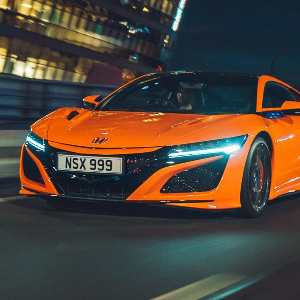
Hyundai's supermini gets a shakedown, find out what we think of it here.
City cars are very popular in the UK due to their compact size and low running costs. Pandas, Up!s, 500s, and more roam British streets in search of a parking space. Another popular choice is the Hyundai i10.
The first generation i10 (codename PA) made its debut in New Delhi, India, on October 31st, 2007, replacing Hyundais Atos (Santro). Since then, the i10 has made its mark as a compact hatchback. It was awarded India’s ‘Car of the Year’ in the hatchback category multiple times and received plenty of positive coverage in Europe.
The first generation i10 served for an astonishing 10 years and was not replaced until 2017. The R&D for its second generation began in 2012 by Hyundai India, with Thomas Bürkle and his Hyundai Europe team working on the design. In addition to revitalising the way this little car looks, the team also increased its proportions for better passenger and storage space.
Our test car is the Hyundai i10 1.0 SE 5dr, its second lowest trim level, priced at £10,200. Even in this specification, it’s still eye-catching.
The i10 is indeed compact, even in comparison to its rivals. Its dimensions are 3,665mm, 2,385mm, and 1,500mm in length, width, and height, respectively. With a 2,385 millimetre wheelbase, it is a Hobbit of the automotive world.
The fourth generation Mazda MX-5, known for its manoeuvrability, is longer than the i10!You’ll hardly find any vehicle smaller than the i10.
Being compact is not a shortcoming. We really like its athletic look that’s paired to a characterful front facia. The rear is simplistic, but its unfussy design is half of the charm.
A large rear window is always welcome, especially when squeezing into tight parking spaces. A small exhaust and quiet running means that silent getaways without waking the neighbours are possible. Its interior continues the minimalist design of the exterior. All the paddings and trims are well textured and feel durable.
You hardly see any plastics inside, unusual on a car at this price point. An analog dashboard, with a monochrome LCD showing mileage, temperature, fuel gauge, and other information.
This three-spoke steering wheel sits in your hands nicely and features a series of shortcut buttons for things like audio, phone controls, cruise control, and the trip computer.
The i10 SE offers little in the way of entertainment with this tiny monochrome display, however, the infotainment system does support Bluetooth and DAB radio. You can also play music via the USB socket while charging your phone.
The biggest problem with the i10 SE is a lack of any navigation system. This can be solves with a smartphone and accompanying holder, but upgrading to a higher trim grants you a screen equipped with both Apple CarPlay and Android Auto.
The interior space may surprise you. For a car of this size, you’ll find good levels of space inside.
Comfortable fabric seats might not look the most glamorous, but they do offer plenty of support for your shoulders and legs. The middle seat is larger than most rivals, but a hump in the floor leaves nowhere to put your feet.
The split folding (60/40) backseats are useful for loading bulky items. Typically, the boot is not huge, but big enough for your daily needs and short trips.
The i10 could do better in terms of storage spaces.
The Hyundai i10 is offered with a 1.0 litre or 1.2 litre petrol engine, and 5 speed manual transmission or 4 speed auto transmission. Our SE model was equipped with a 1.0 litre engine with a 5 speed manual box. Its 3-cylinder engine features 998cc displacement, 12 valves, 71mm in cylinder radius and 84mm in height, and 10.5 to 1 compression ratio. With fuel consumption of 60 mpg, this car ticks the economy box.
At idle the car is quiet with very little vibration from the engine breaching the cabin.
This is a great car for new drivers thanks to an easy-going clutch, however, the gear-lever has a longer throw than expected. The gearing itself is pretty good, but the shift isn’t that satisfying.
The throttle is responsive, even if 66bhp is far from earth-shaking, but the compact nature of the i10 makes the most of what’s under the bonnet. Acceleration up to fourth gear is eager, making this car a contender at a traffic light grand prix. In fourth acceleration begins to fade, and fifth gear feels like it’s designed cruising.Bold overtakes require a downshift, as do steep hills.
The engine is most responsive between 1500 and 4000rpm. When its needle climbs past 5000rpm, however, progress begins to slow. The i10 feels out of its depth on a motorway.
Its steering lacks feedback and isn’t the most accurate in the class. That said, with a wheel pushed to each corner, it does feel stable.
The i10 features a good suspension setup, even on undulating roads. It’s neither too hard on rough surfaces, or too soft when the going gets twisty.
This i10 does battle against the wind at times. Not wind noise, but gusty side winds. It can get blown around a little on wet motorways.
Noise insulation is good. Your conversation is hardly affected by any tire or road noise. This i10 has seen many improvements over the first generation. You’ll feel at ease driving it with ample head room, good visibility, and comfortable fabric seats. After our test drive, we found this i10 not only fit for city use, but even longer motorway trips from time to time.
0-60mph Acceleration Test
This sprint took 13.4 seconds. There’s a noticeable slip from the tyres with the stability systems turned off. Two changes were required to hit 60mph. Maximum acceleration (0.708g) occurs at the start.
62-0mph Braking Test
The i10 dives under hard braking, but provides a solid result overall. Its lack of mass does pay off after all. The difference in front and rear tire traction is not enough to affect its braking performance. A 36.33 metre braking distance is totally acceptable. Its maximum “de-acceleration” of -1.385g is also impressive considering its narrow tires.
The i10 held its braking distance under 38 metres throughout our 10 consecutive braking tests. There was some brake fade, though the result is commendable.
Fuel Consumption Test
Its 39.23MPG fuel consumption is higher than we would ecpect. It is equipped with a small displacement engine, after all, high-speed cruise was never going to be its strength.
Verdict
Pricing against rivals is a big consideration for buyers of these little cars. The Hyundai i10’s major rivals are the Fiat Panda, priced at £10,030 to 16,530, Volkswagen UP!, priced at £9,955 to 14,075, and its cousin, the Kia Picanto, priced at £9,990 to 15,150. These competitors are on par in almost every aspect with the i10. The deciding factor between these models would be popularity, reliability, and brand reputation.
This Hyundai i10 managed to bring us some joy over the few days we had it, most of which came from its agility. The i10 checks almost every box as an affordable compact hatchback.

